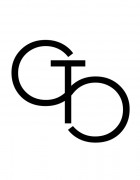Émilie Brout & Maxime Marion are an artist duo living and working in Vincennes, France. Their work predominantly focuses on analogical comparisons between the individual self, such as feelings of reality and past recording, to that of the numerical discretisation, which they describe as “diversion and reconstruction of information,” and the “immediacy of interaction” (eb-mm.net). The work produced in this play between the analogue self and technology, materialises in the form of the archive and moving image, to form non-linear transmedia narratives. As part of their process, Brout & Marion have integrated collaboration efforts with various digital and research fabrication laboratories into their practice, like EnsadLab in Paris, thereby allowing the artists to create complex digital structures to house their experimental work. Works such as Dérive (2011-2014) emphasise this point through its use of algorithmic editing software as the cinematic engine, collating and editing all the selected sequences for the overall film.

Dérives (2011 – 2014), Algorithmic cinema installation. Arte Laguna Virtual Art Prize 2014; Contemporary talent Prize 2011 François Schneider Foundation.
However, the intricacies of Brout & Marion’s work aren’t solely base on technological configurations, and stem from a pure conceptual spirit. Dérive is a feature that spotlights one of cinema’s most famous backdrops, bodies of water. In the film, the artists selected various clips of iconic scenes from Watered by Frères Lumière, Titanic by James Cameron, and Knife in the Water by Roman Polanski. Each of Brout & Marion’s selections were accompanied by a set of commentaries of metadata thereby creating associative keys, which their artwork’s internal algorithm digests, collaging the found footage into a single feature. The result is a work that bypasses the ‘loop’ by renewing itself each time, breathing new life into the moving image’s featured character.
This notion of found footage is a recurring theme within Brout & Marion’s practice, pieces such as Cliché (2014) and Gold and Glitter (2015) both play with this idea, but with found digital objects. Cliché, which is an online generative movie (viewable always from c-l-i-c-h-e.net), uses as its backdrop an Edward Norton monologue from the 25th Hour movie. The monologue, known also as the “Fuck You Monologue,” is loaded with racial and sexual obscenities that are utilised by a popular web search algorithm as key words for search. The short film becomes a montage of found images, which are closely associated with the overlaid monologue.

Cliché (2014), Generative movie, website. Link: http://www.c-l-i-c-h-e-s.net/

Gold and Glitter (2015), Installation, website, found GIF and objects. Link: http://www.goldandglitter.net/
On the latter, Gold and Glitter is both an online webpage (goldandglitter.net), and offline installation. For this project, the artists found “here and there” decorative gold objects – which at one point yielded a golden iPad as decorative as the items they collected. While online the two chose the Internet GIF, in gold as well, as the decorative equivalent to the physical objects.
This play with meta-narratives and found material has also for the pair translated into an investigation process, which took the form of the series Nakamoto (2014-2015).
Satoshi Natamoto, is the infamous creator of Bitcoin. Known as a genius cryptographer and average programmer, Natamoto is said to have disappeared prior to the Bitcoins public release, and in the wake of this action has become a global myth to whether he existed or not. Brout & Marion took up the search for proof, utilising the Natamoto’s own developed technologies. The story of their adventure is as follows: Brout & Marion spent weeks of searching for information on Natamoto, his date of birth, full given name, any detail that could point to him being a real person. Finally, the artists believe they had reached an endpoint to their search – enough information to create a passport – and sook to the dark wed again, this time finding a group of document forgers that specialised in Japanese passport. Through a secure email address, provided by Israel, they communicated the forgers and organised the creation of a passport for a said Satoshi Natamoto. However, they never received the final product in the end, and the only evidence of this journey is a single high-res digital image that the forgers emailed over, prior to shipping the passport.

1. Nakamoto (The Proof) (2014), Passport scan, .jpg file, 2506 x 3430 px, 2014 With the support of DRAC Île-de-France – Aide individuelle à la creation.
For the month of June, CtC will present a selection of Émilie Brout & Maxime Marion’s works on Facebook and Twitter.
Alejandro Ball
Link to Artists’ website: http://www.eb-mm.net

